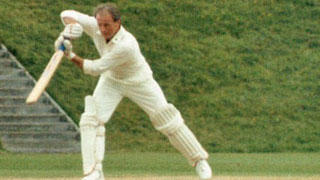How is cricket run? That’s the question that Rod Lyall aims to answer in his new book The Club, a history of the International Cricket Council. And based on the rigorous examination of cricket’s governing body in this book, the answer can only be very badly.
Our story starts in media res with the 2012 Woolf Report that proposed a radical overhaul of cricket governance. As is well known, that report was rejected and the Big Three – or Gang of Three as Lyall calls them – take control of the ICC which eventually led to the current BCCI hegemony.
We then flash back to the birth of the ICC as the Imperial Cricket Conference, with the first section of the book serving as a chronological history of the organisation up until the point it became the International Cricket Council in 1989.
A common theme throughout this section is the ICC’s almost constant position of deferral and delay with very little actual decision-making taking place. For the first half-century it is evident that the only real function of the organisation is to arrange touring programmes for its members.
The first real test for the ICC came when South Africa became a republic and left the Commonwealth – and therefore the ICC (the I still stood for Imperial at this point) in 1961. The book really hits its stride at this point, with Lyall drawing on several sources – including ICC minutes – to thoroughly examine this aspect of the ICC’s history.
Deferral and delay are the order of the day here, with the ICC taking a decade before they even issued a statement condemning the racist policies of the South African government and were still investigating the possibility of South Africa returning to the fold as late as 1979. The parallels with the present-day ICC position on Afghanistan are obvious.
As we reach the end of the 1980s, the ICC has begun to grow with associate members now outnumbering full members and the first affiliate members having joined. After becoming the International Cricket Conference in the mid 1960s, the organisation became the International Cricket Council in 1989, and at this point the second section of the book begins.
The chronological structure of the book is abandoned at this point for a topic-based examination of the last 35 years. Whilst this could be confusing, Lyall skilfully weaves together the various strands of the story into a coherent whole, demonstrating how the ICC fails to reach the standards of a functional governing body in almost every regard.
It also nicely reflects the somewhat schizophrenic nature of the modern-day ICC – part governing body, part events management company and part gentlemen’s club. Expansionist and global in its outlook on one hand, protectionist and insular in its outlook on the other.
The Woolf report and subsequent reforms into the modern-day ICC are covered in detail in this section. It would be tempting to come away from this section – or indeed the book as a whole – thinking that the BCCI are the main villains of the piece. As the book makes clear though, the current position they hold is an inevitable result of over a century of an ICC dominated by indecision, self-interest and a complete failure to act in the best interest of the global game as a whole.
One criticism of the book could be a lack of focus on women’s cricket, covered in a single section and barely mentioned elsewhere, though this is reflective of the fact that the ICC has only had responsibility for the women’s game since 2005. Nevertheless, the current state of the women’s game with only a handful of teams playing the bare minimum of Test matches since the ICC took over could well be illustrative of the future of the men’s game, but that isn’t discussed.
Just as this book hit the shelves, the World Cricket Association (formerly FICA), the confederation of various player unions (India is notable by its absence) issued a report that, like the Woolf Report over a decade ago, calls for reforms of the ICC into something approaching a genuine governing body. As this book makes very clear, such calls are likely to fall on deaf ears.
Recent leaks have suggested that Saudi Arabia are sniffing around global cricket with plans for a big money franchise league that will likely dwarf the behemoth that is the IPL. As the last sentence of Lyall’s book says, we are charging into an increasingly lucrative and increasingly barren future.
The Club doesn’t always make particularly pleasant reading, but it is always engaging and fulfils its goal of revealing how cricket is run. All the governance controversies – recent and historic – are covered in forensic detail. It is highly recommended reading for anyone with an interest in knowing how and why cricket ended up in its current position.







